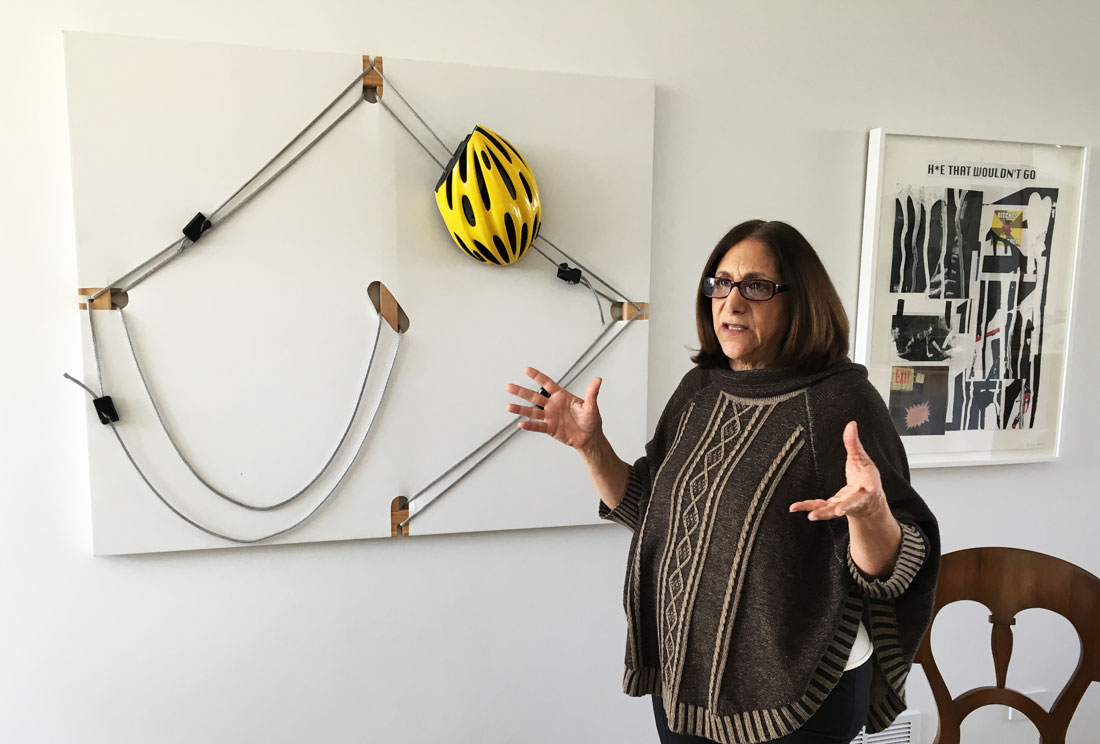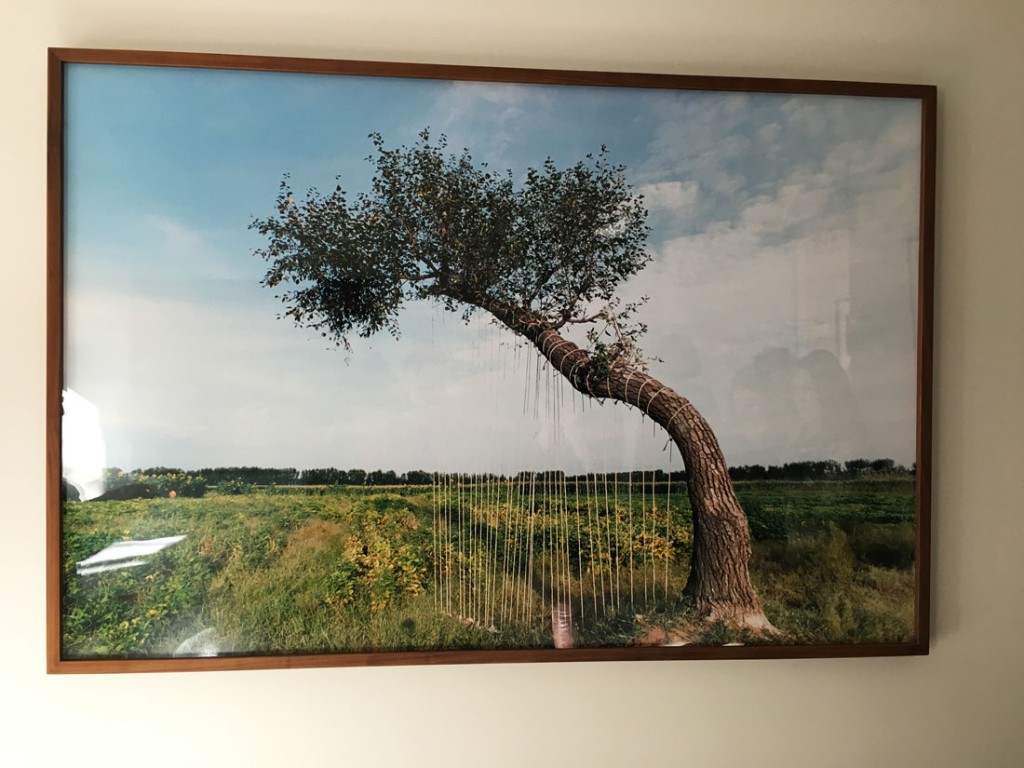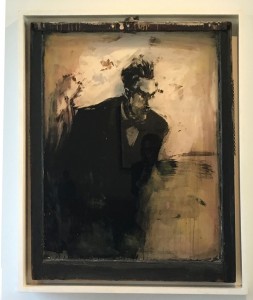By Qingwei Chen and Shanshan Wang
Rena Sternberg’s living room is “decorated” with artworks such as Frog Substitute,Yellow, Henning Bohl’s sculptural mural featuring a yellow bike helmet.
“It was purchased in 2010 from the Casey M. Kaplan Gallery in New York,” said Sternberg, who remembers the source of every work from 40 years of collecting. “[Henning] wants you to see how works start from the construction. It’s really about the art making process.”
The airy, contemporary North Shore home maximizes the wall and floor space for placing favorite pieces from her collection.
Works by postmodern and emerging artists – such as a painting ripe with over-sized carrot slices by Lucy Kim, an invented landscape photograph by Xiuzhen Yin – fill every corner and even the bathroom. Learning about art can open a whole new world for you, said Sternberg, collector, gallery owner and art impresario.
Sternberg majored in social work in college but became fascinated with art and educated herself about art by going to galleries and museums and attending any lectures she could find. She turned to collecting and then channeled her passion into a business.
She provides educational art tours, art consulting and advisory services for collectors and enthusiasts of contemporary art. The Rena Sternberg Gallery in downtown Glencoe provides continuing exhibits and lots of opportunities to meet artists.
“It’s little bit of a funny story. I never intended this as a business,” said Sternberg. Her husband, Daniel Sternberg, came from a family of art lovers and his mother was a collector. Rena started going to the local galleries with her mother-in-law and bought some inexpensive pieces.
When her friends and neighbors came to her house and saw the pieces, they commented on the beautiful art works and asked her about each piece and where she got it.
Then they asked Sternberg to take them to galleries. So she began taking people to downtown Chicago galleries and museums, a few of them at a time or just one individual.
As word spread, more people sought out Sternberg to bring them to the galleries and mentor their art awareness. And they bought and collected works of art.
“After a while, one of the dealers told me: ‘Rena, you might even not know this – you have a business. You are bringing these people who would never come on their own. You are really doing a service and you are educating these people about arts.’”
Every work of art in her house seems to have a story, one going back 40 years to the time Sternberg just started collecting with her husband. A piece of artwork she found then brought an unexpected surprise to her life more recently.
Daniel fell in love with a painting on glass by Elizabeth Peyton when they visited a New York gallery early in their marriage. He really wanted to buy it. Sternberg shied away for it since the man in the portrait looked “so creepy” on the glass. “If you have to have it, then buy it and put it in your office, I don’t want to see him,” she told him. The painting did hang in his office, fulfilling the wishes of both of them.
Then, 10 years ago, when they were cataloging their collection. Sternberg, inventorying every work, came across the latest news about Elizabeth Peyton, the painter of the “creepy guy.” Sternberg couldn’t believe her eyes. After making sure that all the information fit the now famous Peyton, she couldn’t wait to ask her husband if this painting still hung in his office.
Sternberg gave the painting another look and decided she liked it. As a result, we can see this creepy guy “standing” at one of the conspicuous walls in her house.
Artist Amanda Ross-Ho graces the bathroom with art made from mundane domestic accessories. “She very often takes regular objects, things that people disregard or do not highly regard,” Sternberg said, showing Ross-Ho’s sculptural stack of towels.
“The funny thing about this piece is that it should be no wrapping over it. I couldn’t help putting them in the bathroom because I thought it would be funny. But I was really worried that somebody would use them. It’s really just the art. And so I am afraid to take the plastic off,” she added.
When buying art, Sternberg doesn’t have any specific criteria. “I have to respond to it. It has to make me think and want to understand it more,” Sternberg said. “It should be something that clicks with me. It’s hard to articulate.”
It’s also important to learn everything you can about the artist: where they went to school, how long they been showing, what galleries show their work, she said.
“We have many wonderful galleries and museums here in Chicago. I can’t encourage people enough to look and learn before they purchase a piece of art,” Sternberg suggested to newcomers in collecting. “I think you can learn a lot just by looking. All of a sudden, you can sort of define for yourself what your interests are and what you respond to.”
Many people feel put off by contemporary art because they don’t know how to appreciate it. “But I think if you spend a little more time looking and sort of learning about it, it would open up a whole new world for you,” Sternberg said. “Go to the museums and galleries as much as you can. You can learn so much. The best thing you can do is to look. That’s where you get it. Even if you see things that you don’t like, you train your eyes.”






